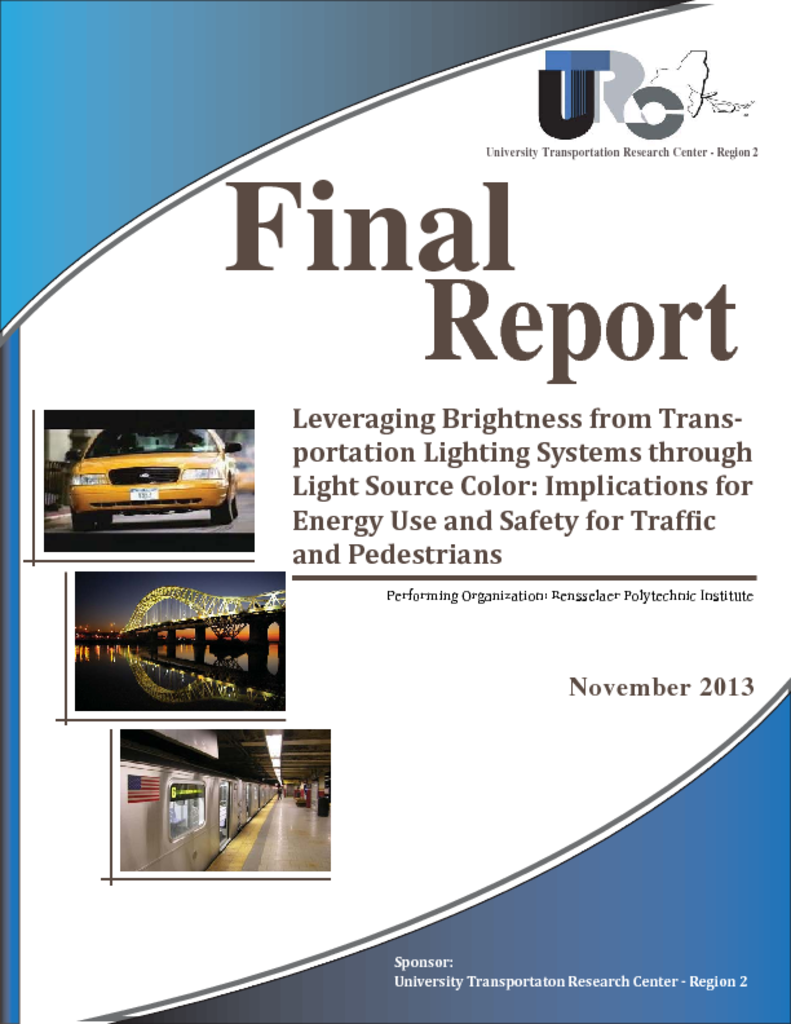Roadway transportation lighting is installed for multiple reasons including traffic safety and pedestrian security. Judgments of pedestrian safety and security along roadways are not strictly correlated to specified light levels, but the color of the light source influences pedestrians' judgments as well. In general, the brighter a roadway location appears, the safer and more secure it is judged as being. Most roads are illuminated using "yellowish" high pressure sodium lamps, but light sources such as light emitting diodes (LEDs) are increasingly being considered as alternative light sources for roadway lighting, and these produce a "white" light appearance. Roads illuminated by "white" light sources are consistently judged as brighter, and as a consequence safer and more secure, than roads illuminated by "yellowish" sodium lamps, even when they are lighted to the same level. The present laboratory study used lighting varying in color in order to help understand the mechanisms underlying brightness perception. Better understanding of these mechanisms can lead to recommendations for lighting that could allow engineers to design roadway lighting for equal brightness and therefore, equivalent perceptions of safety and security by pedestrians, possibly while reducing energy use.




